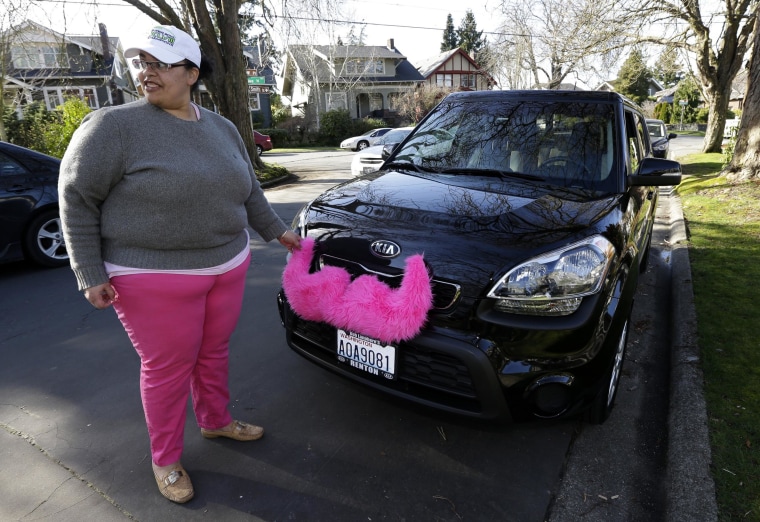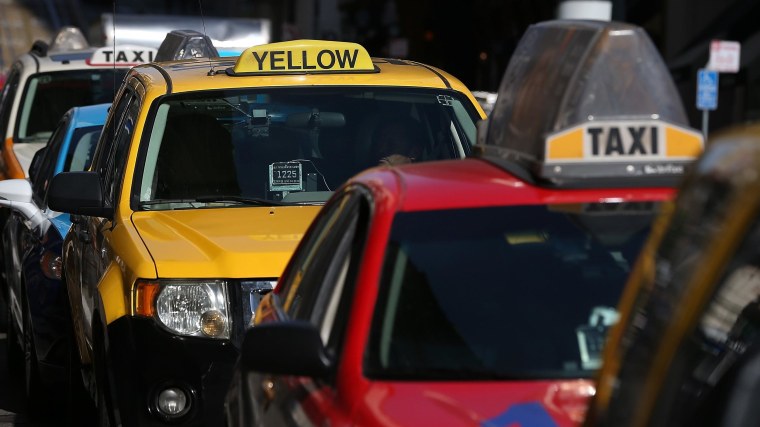One of the hottest battles on the road is all about who has the right to get passengers from point A to point B.
Trendy new services — such as Uber, Lyft or Sidecar — let pedestrians hire a car and driver via a smartphone app. Because their credit card information is already on file, there's no need to fumble with cash.
Many find this option more nimble, convenient and responsive than hailing a cab on the street corner. But it has taxi operators, who are subject to regulation and substantial licensing costs, crying foul.
Outraged by what it calls “a serious threat to public safety,” the Taxicab, Limousine & Paratransit Association —which represents 1,100 taxicab companies — recently launched the “Who’s Driving You?” campaign that aims to make travelers aware of risks the group says they’re exposed to when they get in a car from a ridesharing company.
The services lack essential public safety components, said Dave Sutton, a spokesman for the campaign. They’re not adequately insured, don’t perform rigorous background checks of drivers, and provide little training, he added.
“When people are transported in vehicles by strangers, there is a clear element of risk, and cities across America have come to recognize that the taxi cab industry requires careful governance for public safety,” Sutton said.
“These companies are ignoring the rules. All these public safety requirements — they all cost money.”
Such companies include Uber, which is now available in 33 countries and some 40 cities in North America. It connects customers with professional chauffeurs and taxi drivers, while its UberX division dispatches licensed citizen drivers who make their cars available for hire.
Lyft, which operates in two dozen U.S. cities, matches passengers with licensed motorists who’ve signed up to provide the service. Drivers adorn their cars with giant pink mustaches and greet customers with fist bumps. They collect “donations” rather than fares in some places.

Both companies say they perform extensive background checks on the drivers and let passengers rate them after a ride.
“Both Lyft and Uber are incredibly popular with consumers because they are offering a real service,” said Siona Listokin, assistant professor at the School of Public Policy at George Mason University.
“For typically around the same price of a regular taxi service, you don’t have to wait outside, and there are a lot of convenience factors," she said. "That’s especially useful if you’re traveling in a new city.”
Uber insists it’s “a marketplace” rather than a taxi company and takes pains to say it does not own cars and does not employ drivers. Last month, the company announced it was expanding its background check process; and last week, it said it has a policy in place to cover any potential “insurance gap.”
Lyft says it provides drivers with excess liability insurance up to $1 million per occurrence.
Still, some cities are taking a closer look at the startups.
"Seattle is not like NYC — traditional cabs are harder to find and far less reliable."
On Monday, Seattle became the first U.S. city to impose new caps on app-based rideshare companies, preventing each service from having more than 150 drivers available for hire at any given time.
The decision came despite an online petition, signed by more than 30,000 people, in support of Uber. Seattle author Scott Berkun added his name, noting that the company has raised the quality of service in the city.
“Seattle is not like NYC — traditional cabs are harder to find and far less reliable,” Berkun said. “I realize Seattle’s City Council wants to protect taxi drivers … but that should not come at the expense of preventing needed competition.”
Like many other cities including New York and San Francisco, Seattle also places a cap on the number of taxi medallions, which grant the right to operate a cab. In 2011, two New York taxi medallions each sold for $1 million.
Uber has vowed to fight on in Seattle, but it has also run into roadblocks in Miami and Austin. And in Massachusetts, Boston Cab Dispatch has filed a lawsuit against the company, while in Chicago, taxi companies and drivers have sued the city for allowing the service to operate.
Besides regulatory issues, Uber has also come under fire for its “dynamic pricing” policy, which can boost the cost of a fare several-fold during times of peak demand, like New Year’s Eve.
The “Who’s Driving You?” campaign calls it “price gouging,” while Listokin described it as free market at its core, noting that consumers already experience it elsewhere — paying more for a flight at Christmas time, for example. But she said Uber is walking a fine line.
“If you allow dynamic pricing to go to eight times the regular price, then that could be a marketing disaster,” Listokin said.
Still, she predicts services like Uber and Lyft will continue to grow, while traditional taxi services will develop their own apps.
“It’s really interesting to see what’s going to happen,” she said.
